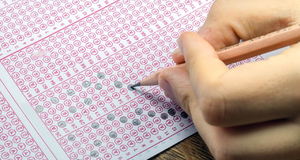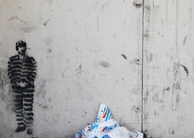From Clocks and Clouds VOL. 6 NO. 1Divided Society, Divided Schools, Divided Lives: The Role of Education in Creating Social Cohesion in Northern Ireland
By
Clocks and Clouds 2015, Vol. 6 No. 1 | pg. 1/1
IN THIS ARTICLE
KEYWORDS
AbstractThe Troubles, a period of conflict between mostly Protestant Unionists and mostly Catholic Nationalists in Northern Ireland, ended in 1998 with the signing of the Good Friday or Belfast Agreement. The division of society, however, continues in its segregated education system. In Northern Ireland today, 93% of children attend either a Protestant or a Catholic school (Conflict Archive on the Internet). Despite widespread agreement on the need for change, and the transformation of other institutions in society such as the parliament, civil service and police, little progress has been made in reforming the education system since peace was established. Our project utilizes qualitative interviews with academics, educational policymakers, teachers, and students themselves. We also visited three different types of secondary schools in Northern Ireland and conducted a poll of secondary school teachers to examine the efforts to reform the education system since the peace agreement. We find there are two dominant, and mostly incompatible proposals on the table, integrated and shared education, as well as the less prominent proposal of an explicit curriculum to be used in all types of schools. Significant impediments remain to the success of all three, including the fact that the younger generation is not politically engaged, that Northern Ireland lacks an infrastructure for religious education outside of public education, and that the segregated system has led to increased differences in quality between Catholic and Protestant educations. I. IntroductionWith the signing of the Good Friday Agreement in April of 1998, Northern Ireland entered a new period of peace after more than three decades of conflict that resulted in the deaths of over 3,500 people (Conflict Archive on the Internet). Despite the widespread optimism following the agreement, sectarian tensions that go back over 300 years continue to impact Northern Ireland. Nowhere is this division more clearly seen than in the education system, which remains segregated between Catholics and Protestants, despite the nearly 20-yearold peace agreement. The Northern Ireland education system is at a critical juncture in its history, with pressure building for reform and debates raging about its future. In this paper, we examine the factors blocking educational integration in the Northern Ireland education system and analyze the proposals for change. To accomplish this, we conducted site visits to schools, as well as qualitative interviews with educational policy makers, academics, students, current teachers, and the next generation of teachers (graduate students in education) in Northern Ireland. We also conducted a poll of secondary school teachers trained to use a specific type of history curriculum. The different proposed solutions outlined in this paper combat the problem in varied ways: through complete educational integration, shared educational experiences, and explicit historical and civic education curriculums. Our results indicate that the problem of segregated education derives from issues of parental choice in regard to quality of education and desire for religious ethos within public schools as well as a lack of the youth engagement with the historical cleavages of society and the contemporary effects of these cleavages. II. Historical contextNorthern Ireland encompasses the six counties still under British rule after the rest of the island was granted independence in the 1920s. The status of Northern Ireland as simultaneously part of the United Kingdom and of the island of Ireland is an issue that has been hotly and violently contested throughout its history. The majority of citizens are Protestant and Unionist, meaning they wish to remain part of the United Kingdom, and they have historically been the economically and politically privileged class. The substantial minority is Catholic and Nationalist, meaning they wish to dissolve the international border and unite with the Republic of Ireland (however, not all Catholics are Nationalists and not all Protestants are Unionist; these comparisons are generalizations). Northern Ireland was created to preserve the interests of the Protestants in the region while Catholics were systematically discriminated against and given second-class citizen status by the Protestant governing elite, which fueled tension between the two religious groups (Rose 1971, 74-112). These tensions erupted in the late 1960s when Catholics rose up in opposition to discrimination in housing, employment, and the criminal justice system as well as unfair electoral practices. The situation deteriorated into protracted violence as Protestants resisted this campaign, public order collapsed and positions hardened on both sides (Grisham 2014, 123). This led to the reemergence of the Irish Republican Army (IRA), a paramilitary organization whose goal was to reunite both parts of the isle of Ireland under the flag of the Republic of Ireland. The British army was sent in to restore order in 1969, and in 1972 the government and parliament of Northern Ireland were dissolved by the British government, which re-assumed direct authority for governing the province. Sectarian violence continued for three decades. The breakthrough came in 1998 when multiparty talks resulted in the Good Friday Agreement. This agreement involved nearly all of the political parties and paramilitary groups in Northern Ireland, as well as the governments of the United Kingdom and the Republic of Ireland. The Good Friday Agreement created a new, power-sharing devolved parliament for Northern Ireland and established that Northern Ireland would remain part of the United Kingdom as long as the majority of people in the province wanted it to do so. The promise of new, proportional, cooperative and consensual institutions persuaded the paramilitary forces to end their campaigns, which had jointly injured more than 50,000 people (Conflict Archive on the Internet). However, despite the peace agreement, Northern Ireland continues to be divided due to educational, residential, and societal barriers between religious groups. The education system, in which 93% of children are educated in religiously segregated schools, is a striking example of an institution in society that has not adjusted to the new reality of peace. III. Northern Ireland curriculumFrom the onset, education in Northern Ireland was divided between Protestants and Catholics, with both churches maintaining their own schools. After the division of the island of Ireland, the United Kingdom government enacted various mechanisms to improve the schooling situation in Northern Ireland, mainly by developing state run schools (Hayes 2007, 457). The original goal was to have churches of all denominations relinquish control of the schools to the state in return for state funding; however, while the Protestant schools conceded ownership of the schools in return for a hefty amount of control, the Catholic church chose to maintain ownership of their schools. This division has led to the current situation in Northern Ireland, which is divided between controlled (or Protestant) and maintained (or Catholic) schools. Both types of schools receive government funding, but the crucial difference is that the Northern Ireland government directly manages controlled schools while the Catholic Church manages maintained schools. As the schools have changed ownership over the years, the curriculum has evolved as well. Before 1989, schools themselves were primarily responsible for determining the curriculum, especially the history and civic education curriculum that included discussions on Catholic/Protestant divides. After 1989, with the introduction of the Education Reform (Northern Ireland) Order, passed by the UK parliament, the government attempted to develop a common curriculum capable of satisfying both the Catholics and Protestants (Smith 2003, 22). In the 1998 Good Friday Agreement, the state revised its curriculum expectations in order to ensure that education was used as bridge to promote cross-community relations (Smith 2003, 21). In order to accomplish this, the state instituted rigorous mandates on the expectations of schools and how they should handle the nature of the divided education. This system ensured that students in both controlled and maintained schools were being taught the same material, particularly with regard to history and citizenship, the subjects most susceptible to different treatment in the separate school systems. In 2007, in response to trends in education to avoid standardization and to instead give teachers the opportunity to utilize skills and outcome-based educational strategies (Interview Three ), the curriculum was revised to give teachers substantially more leeway (Terra 2014, 229). While the ultimate goals of this change were noble, we found that the change also had the unintended consequence of giving teachers the opportunity to pick and choose "modules," or topics, to teach. This inadvertently empowers the teachers to avoid uncomfortable topics or topics that do not fit into their faction's worldview and thus provides formal justification for teacher's reinforcing patterns of bias. In short, the problem of segregated education in Northern Ireland is not just the geographical separation of students from different religious backgrounds, but also a divide in the educational content the two groups are learning. This concept is succinctly described by Luke Terra, associate director of the Haas Center for Public Service and Director of Community Engaged Learning and Research at Stanford University ("Luke Terra"): "The existence of multiple, legitimate, yet incompatible perspectives on the past poses a problem for history education" (2014, 226). The educational divide and the already existing societal cleavages accentuate the divisions of Northern Ireland's society and perpetuate sectarian divisions between the two communities. IV. MethodologyIn March 2015, we visited Northern Ireland with our American University Scholars course. While in Northern Ireland we conducted interviews with educational policy makers, such as Danny Kinahan, Deputy Chair of the Education Committee in the Northern Ireland Assembly, and Dr. Alan McMurray and Ruth Kennedy, two civil servants with the Council for Curriculum, Examinations and Assessment, the organization responsible for creating and monitoring the NI Curriculum. We chose these interviewees, the foremost scholars of Northern Ireland education, prominent politicians and civil servants in the educational sector, and students themselves at many levels to gain a broad sense of the problems faced by Northern Ireland's educational system. We also conducted site visits to three different schools; one Catholic maintained, one Protestant controlled and one integrated school to understand the different educational environments in Northern Ireland. We conducted lengthy interviews with five candidates for a Master's degree in Education at Queen's University in Belfast and conducted a survey of secondary school teachers who were trained to use the Nerve Centre's Teaching Divided History Curriculum upon our return. Our purpose was to uncover the dynamics of reform within the system. V. Proposals for changeThroughout the educational community in Northern Ireland, all sides agree on the need for change in the educational system. Catholics, Protestants, the wealthy, the poor, those in government, and ordinary citizens agree that the antiquated system needs to evolve to fit with Northern Ireland's changing society. However, such a multi-faceted issue that faces the impediments of religious affiliation, political disassociation among youth, and quality of education cannot have a simple or easily agreed upon solution. The people of Northern Ireland fundamentally disagree about what the goals of possible changes to the educational system should be and about the most effective paths to such changes. IntegrationThe most drastic suggestion for the overhaul of Northern Ireland's educational system is complete integration in which all ties between religious institutions and educational establishments would be dropped (Interview One). Advocates of a completely integrated education system rely heavily on contact theory, which predicts that early contact between youth of different groups leads to increased cohesion and social understanding across society as a whole. An education system comprised of students from both groups leads to intersectional friendships that can last outside of school boundaries (Hayes, McAllister, and Dowds 2007, 460, Hughes, Lolliot, Hewstone, Schmid, and Carlisle 2012, 535). Proponents of integration argue that the segregated system, in conjunction with religiously and politically homogenous neighborhoods, fosters misunderstanding and blocks intergroup exchanges and experiences (Interview Seven). The main argument in favor of integrated education is based on the theory that, by separating children from birth, the education system instills misunderstanding and discrimination across social groups. Opponents of integrated education maintain that while integrated education is the obvious solution in other societies, it is not the most effective technique for a society as divided as Northern Ireland (Interview Eight). Integrated schools such as Lagan College in Belfast have existed in Northern Ireland since 1980, but less than 10% of children attend such schools and the sector has not grown since its inception (Conflict Archive on the Internet). In a society with a history of segregated education, the population is reluctant to shift to integration. Additionally, because life is already so segmented in Northern Ireland, there are fears that an abrupt shift to integration could foster increased conflict and misunderstanding. For example, there are some who argue that the recognition of individual cultures, while promoting a shared identity, is vital to Northern Ireland and its population as a whole (McGlynn 2011). Because the population of Northern Ireland has for so long been divided by Protestant-Catholic lines, a rapid change to integrated education may cause more misunderstanding than positive societal change. In addition, in areas of Northern Ireland that are overwhelmingly Catholic or Protestant, a shift to completely integrated education would not create contact between social groups, assuming that students attended the school closest to them (Interview One; Maginness, Interview Nine). In these areas, integrated education would not spark social change because of the religious homogeneity of the neighborhood. An "integrated school" in name might have an overwhelming majority of either Catholic or Protestant students in reality. Using educational policy as an inciter for social change would not be effective in all parts of Northern Ireland because of pre-existing geographical segregation. Shared EducationProponents of shared education present the system as a less drastic plan that still allows for social cohesion to flourish and while increasing contact between religious groups (McCallister, Interview Nine; Interview Five). According to Tony Gallagher of Queens University Belfast, shared education maintains the boundaries between Catholic and Protestant schools, allowing religious groups to have their own educational institutions. However, schools participating in shared education create "porous boundaries" between themselves and other schools (Interview One). For example, schools may have a shared citizenship class or have students on the same sports teams and clubs. At Lisneal College, a Protestant school in Derry/Londonderry, the shared education program is with a local Catholic school, St. Cecilia's, and includes physical exercise classes for parents in addition to citizenship and ethics education for the students (Interview Five). Connections between schools of different religious affiliations allow for contact between students without the risk of losing the valued religious and cultural identities that are linked to the educational system of Northern Ireland. Proponents of shared education advocate for maintaining some degree of separation between the controlled and maintained sectors of education, preserving the divided system while allowing religion to remain an integral part of public education (Interview One). Some academics (e.g., Hayes et al. 2007) argue that shared education is more practical than integrated education, due to the (relatively) simple transfer of students from one school to another rather than the creation of a new school entirely. The Northern Ireland government has shown support for shared education. In January 2014, the Minister of Education launched the "Shared Education Campuses Programme." This programme promises to build 10 new shared education campus by 2018. It will provide investment for three types of sharing: (1) new shared education facilities, (2) enhancing current shared education facilities, and (3) shared education campuses where "schools are co-located and share infrastructure" ("Shared Education Campuses Programme"). In many cases, shared education is presented as a stepping stone to fully integrated education, or a way to avoid the immediate cultural shock of integration to those accustomed to a life of segregation. At Lisneal College, shared education is used in classes dealing with contentious topics, such as the Troubles and citizenship. Claire Bell of Lisneal College (Interview Five) supports the use of shared education for teaching contentious topics because students "self-censor" their words and are more likely to understand other perspectives when there are students from other social groups in the room. While sharing programs are most prominent in secondary schools, Bell believes that shared education needs to happen at younger ages because, as young children, students are less influenced by the opinions of their parents and grandparents (Interview Five). Early intervention with sharing education programs could combat biases formed at home. She also highlighted the importance of offering shared education opportunities to all students, not just the top performers. For example, she emphasized that sharing must be curricular in order to ensure the involvement of poorer students who are less likely to participate in extracurricular activities. This assures that contact experiences are given to poorer students who may not have the opportunity to mingle with children of other groups at activities such as dance, music, and sports. However, opponents of shared education argue that while sharing programs theoretically promote contact, in practice they highlight the differences between religious and social groups. For example, in a shared citizenship class, students from the Catholic school would be wearing different uniforms than the students from the Protestant school, effectively creating visual barriers for social cohesion. Additionally, social groups within the separate schools are already strong due to extensive time spent together, which makes new friendships more difficult. As students have already created social groups with others who attend their school, they are often reluctant to engage with the students from the other school, in some cases making shared education more of a formality than a real inciter of social change. A main concern at Lisneal College regarding the shared education program involves the sources of funding (Interview Five). The main cost to the school is providing transport to and from St. Cecilia's for the shared classes, and without much parental and community support, it is difficult to find funding. In some areas, Protestant and Catholic schools are nearby each other, allowing students to simply walk from one building to another, but in rural and suburban communities, transportation is a major barrier to effective shared education. Providing school transportation between separate schools becomes very expensive, especially when shared education programming is a regular occurrence. Structured Curriculums: The Nerve Centre's "Teaching Divided Histories"One group, the Nerve Centre, has designed a structured curriculum for the teaching of contentious topics that can be used in all educational settings (segregated, shared, and integrated) to increase cross-group understanding and foster social cohesion. Located in Derry/Londonderry, the Nerve Centre markets itself as a "cultural hub" and a "creative media arts centre" (Interview Six). It is heavily involved in artistic and cultural events such as the United Kingdom City of Culture celebration, youth computer science and media programs, and movie screenings. The Nerve Centre's three-year program of "contentious topics" curriculum available for use by teachers in secondary schools across Northern Ireland, the Republic of Ireland, and across the world is called Teaching Divided Histories (Teaching Divided Histories). The program is backed by the British Council, the Curriculum Development Unit of the City of Dublin Education and Training Board, and the Council for the Curriculum, Examinations, and Assessments, among other partners. A main problem with teaching contentious topics in Northern Ireland is lack of student interest and a reluctance on the part of teachers to discuss contentious topics. Students see the Troubles and the time period as their parents' problems, not understanding the contemporary effects these events may have (Interview Two). Teaching Divided Histories combats these issues by employing modern and interactive teaching methods to the curriculum. Additionally, by providing a concrete and explicit curriculum in conjunction with teacher training and resources, the Nerve Centre arms teachers with the tools they need to discuss sensitive topics with their students. The curriculum promotes "shared societies" by addressing the study of conflict with engaging digital media content, presenting the information through structured activities involving films, audio files, comic book creation, and animation (Teaching Divided Histories). For example, while completing a lesson on the Northern Ireland Civil Rights Association (NICRA), students create a comic strip detailing the events that led to NICRA's creation, imagine what people of differing backgrounds might say about the issue, and use photo manipulation software to highlight important parts of photographs of the era (Teaching Divided Histories). However, despite the availability of such curricula, many teachers remain reluctant to bring such divisive topics into their classrooms. In order to encourage more teachers to use Teaching Divided Histories, the Nerve Centre incorporated teacher-training workshops designed to give valuable technological skills to the program. John Peto of the Nerve Centre called it a "bribery" system (Interview Six) that draws reluctant teachers to the curriculum through their desires to technologically modernize their classrooms. The teacher-training portion is "definite and necessary" in order for Teaching Divided Histories to be sustainable and effective (Interview Six). The Council for the Curriculum, Examinations, and Assessments has instituted a similar program, "Controversial Issues Guidance" that strives to increase teachers' comfort discussing divisive issues in the classroom through baseline training and remote resources (Interview Three). The Nerve Centre, even with the system of "teacher bribery" in place, still struggles to involve the ideal amount of schools in their Teaching Divided Histories curriculum (Interview Six). The conflicts of the Troubles and the contemporary effects of the era continue to be somewhat taboo topics in Northern Ireland, a hurdle that must be overcome in order to foster a more inclusive society through educational programs, with equal engagement from both teachers and students. However, through a survey of schools using the Nerve Centre's Teaching Divided Histories curriculum, we received exclusively positive feedback on the curriculum and its implementation into classrooms. Teachers praised the "excellent training and support" and the "variety of ways in which a lesson could be delivered to the students." They also noted that the curriculum was "varied" and "stimulating" and that students were "engaged" while showing "empathy" and "respect" towards their classmates and the topics studied. Students using the curriculum were engaged and interested in the curriculum, showing the effectiveness of structured curriculums such as Teaching Divided Histories in teaching contentious topics. While Teaching Divided Histories has been used only on a small scale (19 schools out of the 210 in Northern Ireland and 6 in the bordering counties of the Republic of Ireland), it has been received overwhelmingly well by teachers, students, and parents. The Nerve Centre's curriculum and the data obtained by surveying teachers using it shows the potential of structured curriculum in addressing contentious topics in secondary education without the need for a systematic overhaul of Northern Ireland's educational structure. VI. Challenges to integrated educationOur research identified many roadblocks to reforming the education system. We found that (1) children are not engaged in the politics of the problem and therefore not motivated to seek solutions to the societal cleavages, (2) the strong relationship between the Catholic Church and Catholic schools renders the Catholic church a strong impediment to change, and (3) that Catholic maintained schools now typically out-perform Protestant controlled schools. This means that the community that has been historically underserved by the segregated education system is now the community least interested in its reform. Children are not EngagedEven though their parents and grandparents were embroiled in the conflict in the 1960s and 1970s, children of today's generation appear uninvolved in the history that shapes their current world. Dr. Pete Shirlow, a professor of law at Queen's University Belfast, said that fewer Northern Ireland citizens vote today because they are not motivated by the "orange and green" (in Northern Ireland, orange is synonymous with Protestant and green with Catholic). In making this point, Shirlow is saying that young people in Northern Ireland see voting as sectarian, something they wish to avoid. Even his own children are not interested in Dr. Shirlow's stories about growing up in Belfast in the 1960s and 1970s (Interview Two). This issue of disengaged children was brought up again at Lagan College. We were able to talk to two students from Lagan College about their school and what they think of the current Northern Ireland education system. Those two students had just been on a school-sponsored trip to South Africa and they were struck by how the students in South Africa were very involved in their politics. The South African students seemed to feel closer to the Apartheid period, as opposed to the Lagan students who feel removed from the Troubles. In South Africa, many of the people that the two Lagan students met were proud to be South African, in contrast to Northern Ireland's population, where there is a conflict of identity and belonging. Some people identify themselves as Irish or from Northern Ireland or British or a combination of these identities (Interview Seven). The Lagan College students also feel that the current conflict is "ridiculous" now, because the conflicts were based on the opinions of older generations and not the opinions of the current generation (Interview Seven). This points to the conclusion that integration has shaped these students to be more culturally accepting of others. It is important to point out, however, that the students at the integrated school come from different political, religious and cultural backgrounds. Their parents are likely more open-minded because they sent their children to an integrated school and would potentially have different opinions than the majority of the population, and these beliefs could be manifested in those of their children, regardless of whether or not they attend integrated schools. To experience the other side of the spectrum, we also talked with girls from Dominican College Fortwilliam who live in Catholic neighborhoods and attend a Catholic school. They are entirely surrounded by people of the same background and belief at school and in their neighborhoods (Interview Eight). To them, the conflict is not "ridiculous" because they feel more closely connected to the divisions within society. The societal divides define their lives in a much more definitive way than it does for the students at Lagan College. Mark Scott, an education student at Queen's University Belfast, was raised in a Protestant household and went to a Protestant school. Even though he grew up in a Protestant ethos, his parents did not actively support Protestant or Unionist domination of Northern Ireland. When asked whether or not schools in Northern Ireland should stay segregated, he said that since students are not interested in the politics of the problem, schools do not need to be segregated. He also thinks that as more students from different religions enter into shared education programs, the divide between Catholics and Protestants will gradually break down (Interview Four). While there is an advantage to having the current generation feeling separated from the conflicts of their parents and grandparents, there is also a major disadvantage in their disengagement because it does not foster reconciliation or mutual understanding. If students attend integrated schools, they face better chances of putting aside their differences and working together to build a brighter future. From a teacher's perspective, the university students on track to become teachers (such as those at Queen's University) will have a better chance of teaching in an unbiased manner about the conflict since they did not live through the period of conflict. The disadvantage is that if the conflict of the 1960s and 1970s is not discussed and understood from all points of view, the differing sides will have trouble coming together and breaking down societal barriers. Understanding the past is integral to building a better future. Even if the children are not engaged in the politics of the problem directly, they are indirectly influenced by their parents, teachers and the curriculum, which perpetuates divisions. Furthermore, even though the younger generation has not lived the conflict as intensely as their parents and grandparents and are alienated from the Troubles, many are personally invested in the segregated system. For example, students at Dominican College were adamant that Northern Ireland was "not ready" for integrated education because of the existing discrimination and segregation of the society, which is, in part, a product of the segregated educational system (Interview Eight). Not all see a need for reform in the short-term, and among those who do, there is disagreement on the importance of a common curriculum in addressing the divisions of the past. Relationship between the Catholic Church and the Education SystemThe relationship between religion and the education system in Northern Ireland can be very confusing for those who have not experienced religion as a part of a public education system, such as Americans. In Northern Ireland, however, religious institutions have no educational structure to provide religious education outside of the public school system. In all three types of schools in Northern Ireland, religion is a key part of the curriculum. Religious institutions in Northern Ireland deliver their education to students within the education structure (Interview Three). In Northern Ireland, there are no religious education infrastructures outside of the public school system, such as Sunday schools and church youth groups. People instead rely on the child's school to instill religious knowledge and values. According to the Council for Curriculum, Examinations, and Assessment, religious education is defined by the Department of Education and Northern Ireland's four main churches ("Religious Education," CCEA), which are Roman Catholic, Protestant, Anglican and Methodist (Northern Ireland Statistics & Research Agency). Religious education is included in every Key Stage, or level of education, in the Northern Ireland Curriculum, along with Mathematics, the Arts, Physical Education, etc., as outlined in The Department of Education's Core Syllabus for Religious Education. This document spells out what students will learn throughout their education about religion. All Key Stages have Christianity as their focus, while Key Stage 3 (Years 8-10) has an extra section about world religions where students "should be given an introduction to two world religions other than Christianity" (29). In Key Stage 4 (Years 11-12) students learn about the different traditions within Christianity and they must study the given topics from the Roman Catholic tradition and from the Protestant tradition (34). Because of this, many opponents to integrated education, including the Catholic Church, fear that integration would provide subpar religious education. They fear that an integrated system would lead to the fall of the "religious ethos" of their schools (Maginness and McCallister Interview Nine) and a decline in the ability of the church to socialize its congregants. For the implementation of integrated education to be successful in Northern Ireland, either a system of religious education outside of public schools or a method of providing in-school religious education for various religious groups would be necessary. Different Qualities of EducationA recent trend in Northern Ireland has been that Catholic schools receive better test results than their Protestant counterparts. In 2015 59.1% of Catholic school leavers (students exiting the public education system) achieved two or more A-Levels, as opposed to 52.4% of Protestant school leavers (Toogood 2015, 3). Catholic schools graduate students with higher achievement levels, as measured in number of A-levels achieved, than their Protestant counterparts. This creates a cyclical effect of class relations because Catholic students, having had a better secondary education, tend to carry their success into later life. James, an Education Master's student from Queen's University, Belfast, said that if he were to have children, he would send them to a Catholic school because of their higher academic standards, despite his belief in the development of an integrated educational system in Northern Ireland. Personal desires for successful schools can outweigh a belief in the moral superiority of integrated education. This encourages Catholic schools to avoid integration in order to maintain their academic superiority (Interview Four). In another example, the religious "ethos" of Catholic schools like Dominican College Fortwilliam and the quality of their education encourages the pride of the alumnae, which has created a huge endowment. This gives the school the ability to teach seven different languages in a year, two of which were taught through one-on-one instruction (Interview Eight). On the other end of the spectrum is Lisneal College, a Protestant school in Derry/Londonderry. Claire Bell, the Head of History, said that the children that go to her school are not "better off," so they do not go to extra-curricular activities that include children from different backgrounds (Interview Five). They just "mix within their own community" ("Divided Histories"), rather than going to expensive after-school activities such as dance, art, and sports, which would allow them to interact with Catholic youth. Variations in qualities between the Protestant and Catholic sectors of education foster increased resistance to educational reform among the (now) more privileged Catholic community. Other ChallengesWhile the challenges explained above are the three main impediments, there are a multitude of other challenges that hinder a fully integrated education system due to the complexity of Northern Ireland's society. For example, parents like the idea of being able to choose what school to send their children to. If there are only integrated schools, parents have no way of influencing their children's education. Separate schools also allow traditions to continue while teaching the religious ethos of the school (Interview Four). A majority of the girls from Dominican College with whom we spoke are in favor of segregated schools because they say that people are not ready for integrated education. They believe many people are too narrow-minded and that conversations between narrow-minded groups would not be beneficial. They are afraid that integrated schools would spark more tensions between young people of different religions. They do see, however, how segregated schools divide the community and maintain older norms (Interview Eight). This creates a paradox: students are not "ready" for integration because of the long history of segregation within the school system. Without integration or contact programs, however, it is left unexplained whether they ever will be ready. One problem we observed at the different site visits is that children of different religions are not only segregated at school, but at home. They often live within communities of their own religion and they do not socialize with young people with different backgrounds. Many students only start socializing with young people of different religions when they go to university. Mark Scott from Queen's University, Belfast went to a Protestant grammar school that prepared him academically for university, but left him culturally unprepared. Meeting so many new people at university, including Catholics, was "overwhelming" for him (Interview Four). Pete, another Queen's University, Belfast graduate student in Education, said "there is too much emphasis on the fact that [schools are] Protestant or Catholic" and that will not lead to a single society "because you can't build a strong society if you're separate." He believes that integrating schools would help bring together a unified Northern Ireland because then young people would learn from one another. And, though separate schools, according to another Queen's University, Belfast student, Jade, keep views from being challenged, bringing students together does not automatically reduce divisions in the way the conflict theory suggests. In her student teaching, she experienced a shared classroom and she struggled to facilitate interaction between the two groups because they had never interacted before (Interview Four). VII. Significance of research and suggestions for further researchNorthern Ireland made an impressive leap in community relations with the Good Friday/Belfast Agreement, which formally ended the period known as the Troubles, which was characterized by political violence between Protestants and Catholics. Despite the desire of the Good Friday Agreement to promote sound community relations between the two groups (Barnes 2002, 22), Northern Ireland still remains a divided society, which is clearly reflected in the schooling system. Segregated schooling has two implications for Northern Ireland. The first is that segregated schooling perpetuates prejudices and stereotyping between Catholics and Protestants, which negatively impacts broader community relations. These negative community relations have significant implications. The political representatives of the two groups are increasingly becoming polar opposites in regards to their policies, with little support for moderate policies. Segregation therefore continues to have a tremendous negative impact on Northern Ireland. In the first implication, segregation between Catholics and Protestants promotes ignorance about the other group. Because of the lack of interaction, students in segregated schools do not have the opportunity to learn about the other group. This inability to get to know the other side of the conflict perpetuates stereotypes and prejudices (Hughes 2014, 193). Furthermore, in the absence of contact, there is a perpetuation of mutual ignorance and suspicion, which could potentially reignite the violence that was a characteristic of the Troubles (Abrams et al. 2005, 269). Juxtaposed to this lack of ignorance, numerous scholars praise the benefits of promoting contact between the two groups to reduce prejudice (Hughes 2014; Hayes 2007; Gallagher 2004). Friendships that develop between Catholics and Protestants can lead to increased understanding, the ability to take the perspective of the other, and the ability to reassess the group's own biases (Hughes 2014, 206). Therefore, the promotion of better community relations between the Catholics and Protestants by reducing segregation will reduce prejudice and increase the stability of Northern Ireland's society. A reduction in segregation and the ensuing growth of community relations would also have political benefits, most notably the creation of a religiously moderate citizenry. The continuation of religious prejudices due to segregation has resulted in Northern Ireland becoming more religiously divided, especially in terms of the electoral behavior and party preferences (Hayes et al. 2007, 477). In effect, this creates two political extremes–Unionist and Nationalist–that have few policies in common and thus have difficulties reaching agreement. Therefore, segregation has led to political deadlock, as politicians increasingly cannot find sources of agreement because of both their own divisive worldview as well as the polarized worldview of their constituencies. The key solution to this problem would be the end of segregation and the increase in community relations, which will promote a center and common ground in Northern Ireland politics (Hayes et al 2007, 476). Given the significance of understanding the role of educational policy in inciting social change, there are many avenues for future research on this topic. It is important to shed further light on the relationship between educational systems and societal cohesion, in Northern Ireland and elsewhere. There are several particularly compelling possibilities for future investigation: 1) The role of educational policy as a tool for encouraging social cohesion in other countries, 2) The effects of segregated education and divided society on countrywide mental health, 3) The changing socio-economic relations between the Catholic and Protestant communities in Northern Ireland and how they have affected public opinion of educational reforms, and 4) The practical effects on educational success of the different school systems in Northern Ireland. It has been established that Catholic maintained schools generally outperform their Protestant controlled and integrated counterparts, but the underlying causes behind this phenomenon are left unclear. VIII. ConclusionIn conclusion, the Northern Ireland education system continues to face significant problems as it develops in the years following the Good Friday Agreement. This project used qualitative interviews, site visits, and survey data to identify the key challenges to reforming Northern Ireland's education system: politically unengaged youth, the intertwined relations between religious institutions and public education, and marked educational quality differences between maintained and controlled schools. We examined the three prominent proposals for change, and while all show promise to be effective, their potential success relies on the engagement of the population and their willingness to embrace change. Despite the fact that the majority of school-age children in Northern Ireland were born after the end of the Troubles, the division between Catholics and Protestants seems fixed in the continued segregation of the school system. The Northern Ireland education system itself is a reflection of the social cleavages and religious segregation in the society as a whole, and has been shaped by these same cleavages and biases. However, the educational system may conversely be used as a path towards increased social cohesion through the implementation of contact programs, explicit curriculums, and integration. The educational system in Northern Ireland is part of the reason that the society remains harshly divided 20 years after the Troubles, but changes to the system have the potential to move Northern Ireland towards increased social cohesion and harmony in a religiously and politically divided society. AuthorKara Schiaparelli, Melanie Mackenzie, Abigail Newbold, Austin Krug, and Joe Wagner conducted this research while traveling with an AU program to Northern Ireland. School of International Service (SIS), American University. ReferencesBarnes, L. Phillip. "World Religions and the Northern Ireland Curriculum." Journal of Beliefs & Values 23, no. 1 (2002). 19-32. doi: 10.1080/13617670220125647 Bell, Claire. Interview at Lisneal College, Derry, Northern Ireland. March 11th, 2015. "Core Syllabus for Religious Education." Department of Education, accessed September 8, 2015. http://www.deni.gov.uk/re_core_syllabus_pdf.pdf. Council for the Curriculum, Examinations and Assessment site visit. Interview by AU Scholars 2015 Northern Ireland Research Group. March 10, 2015. In discussion with group. Dominican College Fortwilliam site visit. Interview by AU Scholars 2015 Northern Ireland Research Group. March 12, 2015. In discussion with group. Donnelly, Caitlin and Robert D. Osborne. 2005. "Devolution, Social Policy and Education: Some Observations from Northern Ireland." Social Policy and Society 4 (2): 147-156. Gallagher, Tony. "Coexistence and Education." Presentation at Queen's University, Belfast, Northern Ireland, March 9th, 2015. Group. March 10, 2015. In discussion with group Hayes, Bernadette C., Ian McAllister, and Lizanne Dowds. 2007. "Integrated Education, Intergroup Relations, and Political Identities in Northern Ireland." Social Problems 54 (4): 454-482. doi: http://dx.doi.org/10.1525/sp.2007.54.4.454. Hewstone, Miles, Ed Cairns, Alberto Voci, Stefania Paolini, Frances McLernor, Richard J. Crisp, Ulrike Niens, and Jean Craig. "Intergroup Contact in a Divided Society: Challenging Segregation in Northern Ireland." In The Social Psychology of Inclusion and Exclusion, edited by Dominic Abrams, Michael A. Hogg, and José M. Marques, 265-292. New York: Psychology Press, 2005. Hughes, Joanne. "Contact and Context: Sharing Education and Building Relationships in a Divided Society." Research Papers in Education 29, no. 2 (2014). 193-210. doi: 10.1080/02671522.2012.754928. Hughes, Joanne, Simon Lolliot, Miles Hewstone, Katharina Schmid, and Karen Carlisle. 2012. "Sharing Classes between Separate Schools: A Mechanism for Improving Inter-Group Relations in Northern Ireland?" Policy Futures in Education 10 (5): 528-539. Hutchinson, Barry and Peter Whitehouse. 1999. "The Impact of Action Research and Education Reform in Northern Ireland: Education in Democracy." British Educational Research Journal 25 (2): 141-155. Kennedy, Ruth and Alan McMurray. Interview by AU Scholars 2015 Northern Ireland Research Group at the Council for the Curriculum, Examinations, and Assessment. March 10th, 2015. Lagan College site visit. Interview by AU Scholars 2015 Northern Ireland Research Group. March 12, 2015. In discussion with group. Lisneal College site visit. Interview by AU Scholars 2015 Northern Ireland Research Group. March 11, 2015. In discussion with group. "Luke Terra." Hass Center for Public Service. Accessed September 7, 2015, https://haas.stanford. edu/about/contact-us/haas-center-staff/luke-terra. McGlynn, Claire. 2011. "Negotiating Difference in Post-Conflict Northern Ireland: An Analysis of Approaches to Integrated Education." Multicultural Perspectives 13 (1): 16-22. Nerve Centre site visit. Interview by AU Scholars 2015 Northern Ireland Research Group. March 11, 2015. In discussion with group. Northern Ireland Statistics & Research Agency. "Census 2011: Key Statistics for Northern Ireland." Statistics Bulletin, accessed September 8, 2015. Located at: http://www.nisra.gov.uk/Census/key_stats_bulletin_2011.pdf. Political debate at Dominican College Fortwilliam with Alban Maginness, John McCallister, Nelson McCauseland. March 13th, 2015. Queen's University Belfast site visit. Interview by AU Scholars 2015 Northern Ireland Research Group. March 13, 2015. In discussion with group. "Religious Education." Northern Ireland Curriculum, accessed September 8, 2015. http://www.nicurriculum.org.uk/foundation_stage/areas_of_learning/religious_education. "Shared Education Campuses Programme." Department of Education, accessed September 8, 2015, http://www.deni.gov.uk/shared-education-campuses-programme.htm. Shirlow, Pete. Interview by AU Scholars 2015 Northern Ireland Research Group. March 9, 2015. In discussion with group. Smith, Alan. "Citizenship Education in Northern Ireland: Beyond National identity?" Cambridge Journal of Education 33, no. 1 (2003). 15-21. doi: 10.1080/0305764032000064631 "Teaching Divided Histories." Nerve Centre, accessed September 7th, 2015. http://www.nervecentre.org/teachingdividedhistories#.Ve-Fcp3BzGc Terra, Luke. 2014. "New Histories for a New State: A Study of History Textbook Content in Northern Ireland." Journal of Curriculum Studies 46 (2): 225-248. Toogood, John. "Qualifications and Destinations of Northern Ireland School Leavers 2013/14." Department of Education. Last modified May 2015. http://www.deni.gov.uk/qualifications_and_destinations_1314.pdf. AppendixSuggested Reading from Inquiries Journal
Inquiries Journal provides undergraduate and graduate students around the world a platform for the wide dissemination of academic work over a range of core disciplines. Representing the work of students from hundreds of institutions around the globe, Inquiries Journal's large database of academic articles is completely free. Learn more | Blog | Submit Latest in Education |

















